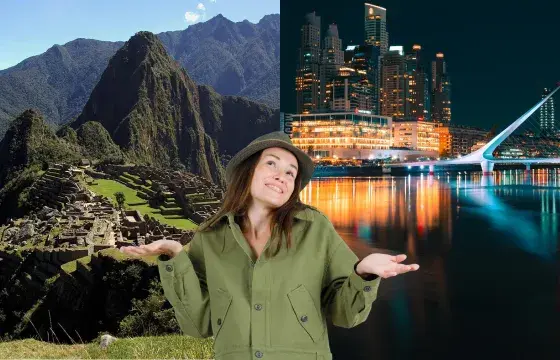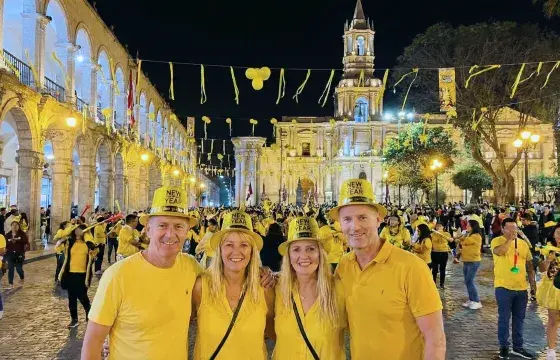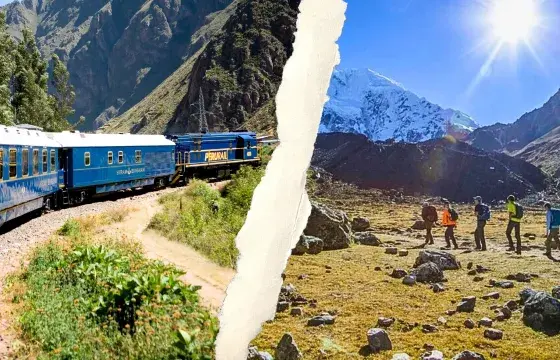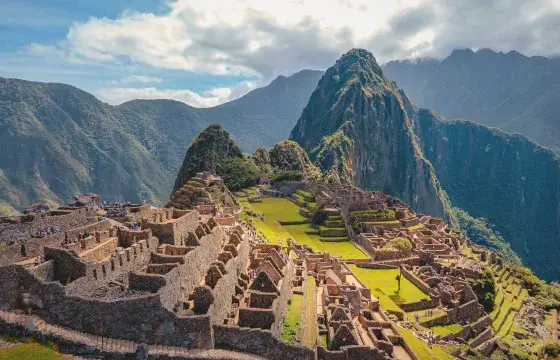If you're a mystery enthusiast, an unwavering seeker of enigmatic tales and remote places, you've arrived at the right place. This blog will take you on a fascinating journey as it reveals the best-kept mysteries of mysterious Peruvian locations. Get ready to be transported to intriguing and fascinating times, where every corner unveils a piece of history that challenges the imagination.
From the mysterious Witches of Cachiche in Ica to the ethereal Necropolis of Chauchilla in Nasca, our journey will lead you through hidden trails that ignite curiosity and emotion. Join us in this adventure where mystery and Peruvian history collide! Discover the magic of the unknown and and allow the captivating tale of these locations to captivate you.
Are you ready to explore the secrets that await in the land of the Incas? Welcome to a journey full of enigmas in Peru!
Witches of Cachiche
Cementerio General La Apacheta (Arequipa)
Necrópolis de Chauchilla (Ica)
7 Peruvian Mysteries You Were Not Aware of
- Nazca Lines
- Stone of the 12 Angles
- The Treasure in Lake Titicaca
- The Legend of Mama Ocllo and Manco Capac
- Ayahuasca and San Pedro Rituals
- Offerings to Pachamama
- Moche Pyramids in the Peruvian Desert
Discover the Secrets of Peru Witches of Cachiche (Ica)
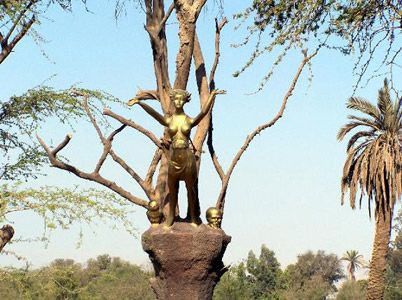
Situated in Ica, just 4 kilometers from the charming Plaza de Armas, is the fascinating Brujas de Cachiche Thematic Park. This captivating place immerses us in the shadows of the past of this charming town. According to the rich local tradition, Cachiche served as a crucial refuge for women accused of witchcraft during the Viceroyalty, providing them with protection against the persecution of the Spanish Inquisition.
These ladies sought shelter in Lima after fleeing accusations and terror in Europe, and they eventually found sanctuary in the picturesque Ica Valley. As you explore this theme park, you'll come across iconic structures like the striking Monument to La Bruja and La Palmera de las Siete Cabezas, which are both closely associated with the tragic events that shaped this town's past. Immerse yourself in a unique experience as you unravel the mysteries surrounding this fascinating corner of Ica.
Cementerio General La Apacheta (Arequipa)
Immersed in the historic city of Arequipa, the iconic Cementerio General La Apacheta towers above the city, preserving the stories of over two hundred thousand tombs that tell the stories of the people who shaped the glory of the White City. Since its construction in 1833, this cemetery has stood quiet testimony to Arequipa's rich past.
The amazing "Myths and Legends" guided tour runs every year from October 28 to October 31. Discover myths and tales interlaced throughout the moonlit graves to fully immerse yourself in the intriguing story of Arequipa. Accompanied by specialized guides, visitors will have the unique opportunity to uncover captivating stories that transcend beyond everyday reality.
Would you be brave enough to explore this graveyard at night and push the boundaries of time? The Beneficencia Society of Arequipa cordially invites you to explore the mystique that permeates every crevice of this cemetery, where legends meld with the obscurity of the night to create a singular and remarkable encounter. Are you prepared to explore Arequipa's past in a whole new way?
Necrópolis de Chauchilla (Ica)
Just 27 kilometers south of Nasca, the captivating Necropolis of Chauchilla emerges, a physical reminder of the pre-Inca civilizations that formerly inhabited the dry Ica desert. This archaeological site, nestled in the province of Nasca, offers a one-of-a-kind experience for visitors looking to get fully immersed in historical realism.
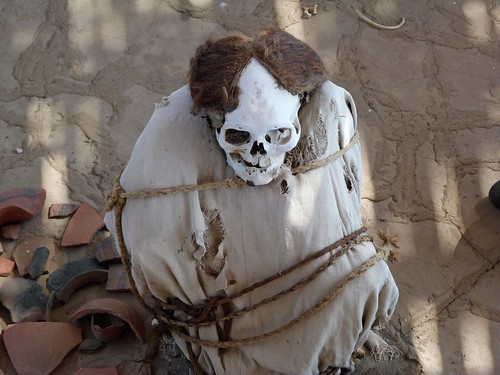
You'll be surrounded by relics that narrate stories from the past as you walk Chauchilla's grounds. The rich civilization that existed between the second century BCE and the ninth century CE is brought to life through the fragments of ceramics, textiles, and other items. Every step you take at the Necropolis, which functions as an outdoor museum, will bring you closer to the spirit of the ancient civilizations that once called this ancient region.
However, Chauchilla's jewel lies in its original tombs, where mummies rest in a state of astonishing preservation. These ancient people have been able to preserve not only their forms but also small details like hair and even pieces of skin due to the dry conditions of the Ica desert. It's a journey through time where history comes to life in a tangible way.
The Necropolis of Chauchilla serves as a bridge between the past and the present, a place where you can directly contemplate the footprints of the civilizations that shaped the region. Are you brave enough to explore this open-air museum and discover the mysteries that await those who venture into the past in the Necropolis of Chauchilla?
7 Peruvian Mysteries You Were Not Aware of
1. Nazca Lines
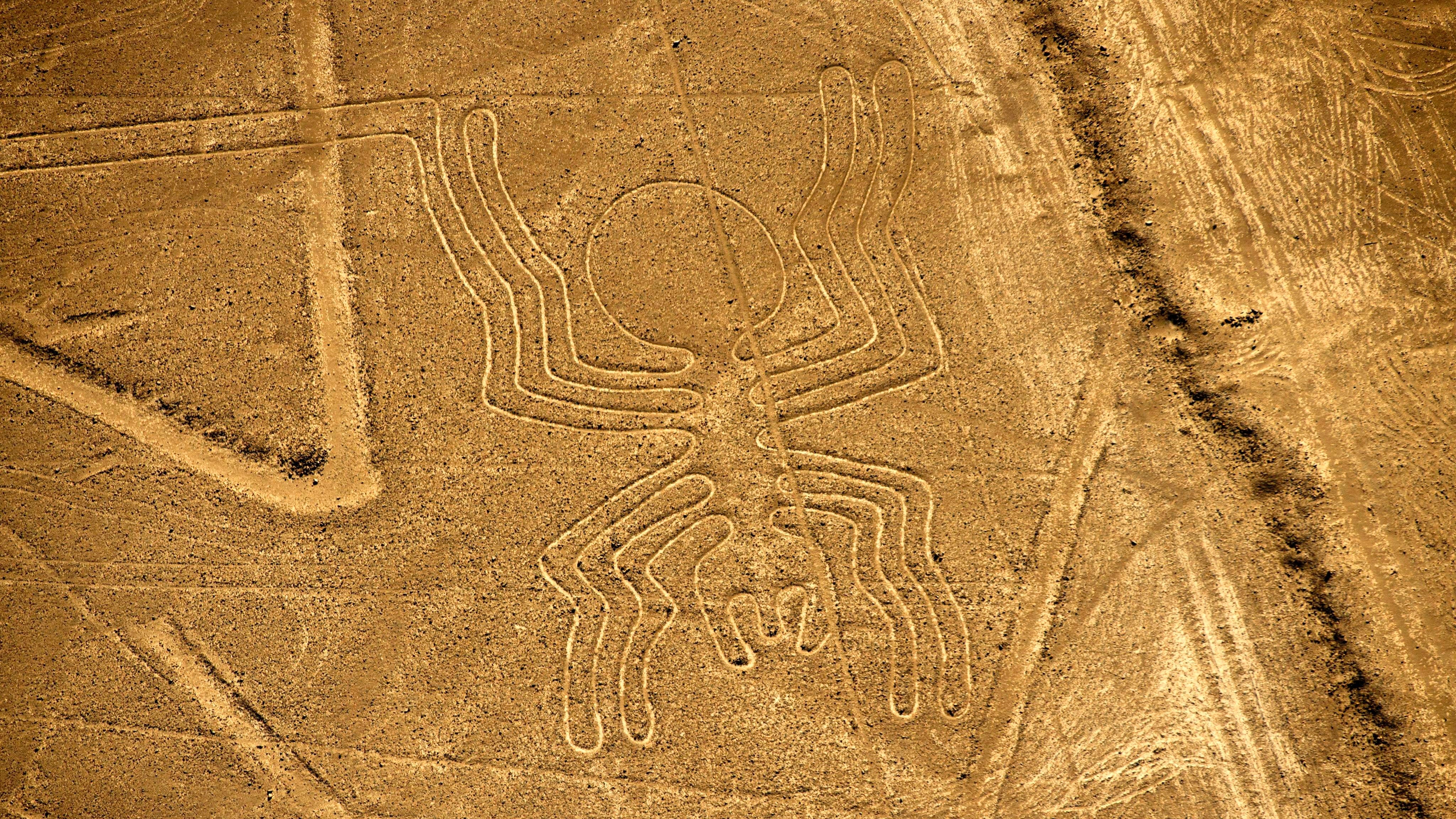
The mysterious Nazca Lines, believed to have originated around 600 BCE, persist in challenging human understanding. Are they the product of extraterrestrial intervention, or are they an old astrological calendar? Investigate this mystery from above and be in awe of the figures that have withstood the ages in the enormous Nazca Desert.
From a flight over these celestial figures, ranging from an imposing condor to an enigmatic hummingbird, an astonishing spectacle unfolds. These lines, etched into the earth, offer a unique experience that continues to fuel the imagination and theories of generations. Astronomical celebration or encoded message? The mysteries surrounding the Nazca Lines still elude travelers who wish to discover the secrets these ancient figures may conceal.
2. Stone of the 12 Angles
In the historic city of Cusco, the former capital of the Inca Empire, a stone with 12 angles defies the logic of Incan construction. he accuracy with which it was put together begs the question of how skilled this ancient civilization's architects were. Immerse yourself in the mystery of the Stone of the 12 Angles and explore the wonders left by Incan engineering, which continues to perplex those seeking to understand the mysteries surrounding this outstanding example of prehistoric building.
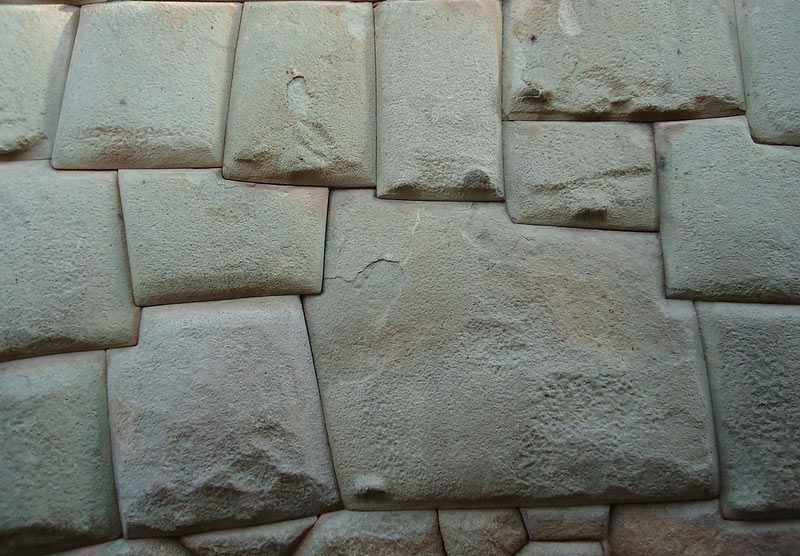
3. The Treasure in Lake Titicaca
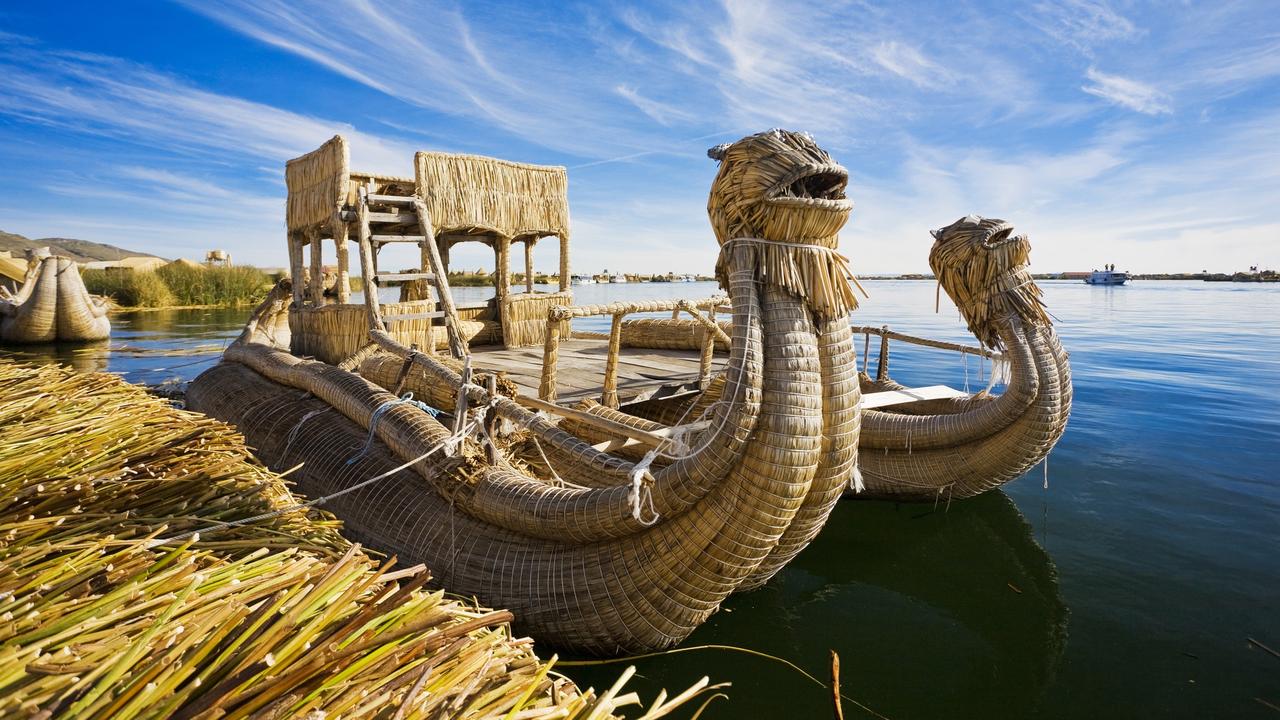
Immerse yourself in the fascinating legend of the last Inca, Atahualpa, whose treasure is said to be hidden in the mysterious depths of Lake Titicaca. This tale enhances the area's already extensive history with a dash of mystery and adventure. The development of this buried mystery began with the capture of Atahualpa in 1532 by Spanish conquistadors under the command of Pizarro in Cajamarca.
It is said that,the sailors carrying Atahualpa's treasure were compelled to submerge it into Lake Titicaca due to their treachery by the conquerors. The creativity and unwavering search of individuals who aspire to unearth the forgotten gems of history have been stoked by this desperate deed. What secrets and riches lie hidden in the depths of this sacred lake? Join us on a journey that will unravel the mysteries submerged in the waters of Lake Titicaca and transport you to an era where adventure and greed intertwine in a tale that piques the curiosity of modern explorers and history enthusiasts alike.
4. The Legend of Mama Ocllo and Manco Capac
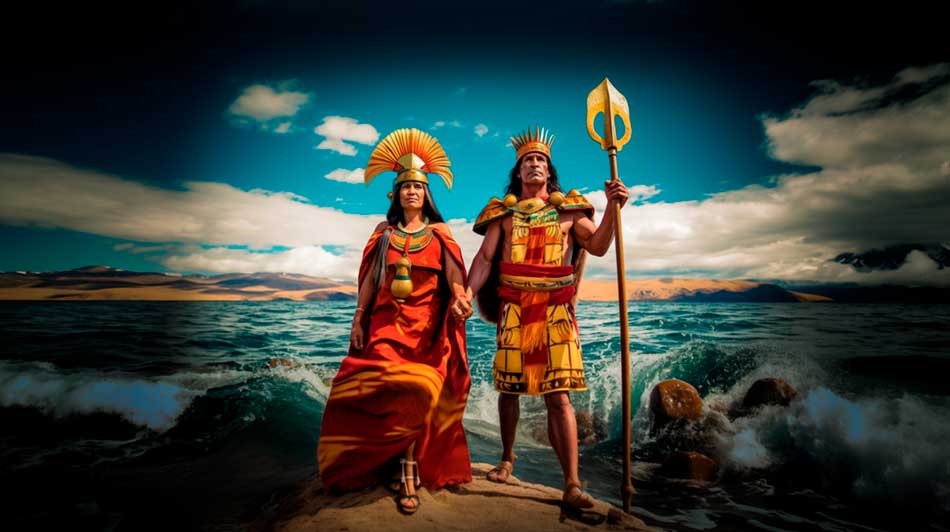
Immerse yourself in the fascinating legend of Mama Ocllo and Manco Capac, the mysterious duo sent by the sun deity Inti to lead humanity toward civilization. While the actual existence of Manco Capac and Mama Ocllo is still shrouded in legend, the ruins in Cusco, particularly at the historic Sun Temple Coricancha, provide evidence of the story's potential veracity.
Exploring these sites offers a window into the intersection between mythology and history, challenging the line between the divine and the tangible in the Inca capital. What mysteries are hidden away in the corners of Cusco, exposing the veracity of this age-old mythology? Venture forth in search of answers and discover the rich tapestry that intricate web of myth and reality at the core of the former Inca empire.
5. Ayahuasca and San Pedro Rituals
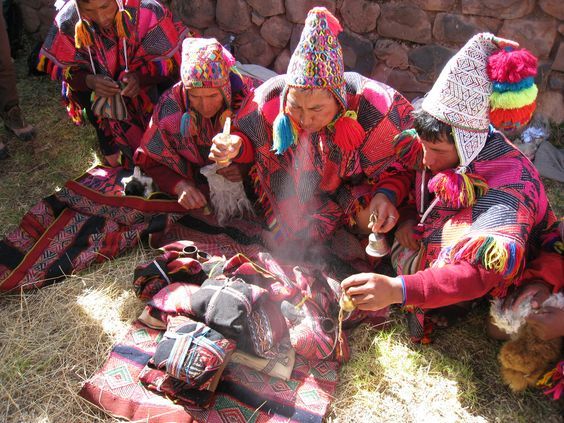
The allure with the Ayahuasca and San Pedro ceremonies, which have a rich history dating back over 4,000 years in the Peruvian Amazon, is undeniable, even though we caution against consuming them. These ceremonies provide a rare glimpse into traditions that have endured through the ages in Peru's enigmatic woods, despite the risks involved.agrado, ha desempeñado un papel destacado en ceremonias ancestrales.
Native American tribes have utilized ayahuasca for millennia for spiritual and therapeutic purposes due to its psychedelic qualities. Ancestral rites have made significant use of San Pedro, the sacred cactus.
This exploration of Amazonian customs uncovers a deep bond between people and the natural world, where the quest for healing and enlightenment meld together to form a centuries-old spiritual tapestry. Even if we advise care, we cannot overlook the cultural richness that is being revealed in these ceremonies, which invite us to consider the complex interrelationships between nature and humans in the center of the Peruvian Amazon.
6. Offerings to Pachamama
Experience the enchantment of the soil payment, a centuries-old custom in Cusco dedicated to paying respects to the formidable Pachamama. This tradition, which dates back to the Inca Empire, brings people together in August to emphasize the intimate relationship with the natural world. With the assistance of a shaman, participants give coca leaves, seeds, chicha, and huairuros as a sign of thanks for the earth's fertility and defense. Those that immerse themselves in this experience will have a unique connection to Cusco's spiritual heritage as this moving deed finishes with the blessing of the sacred Apus, the mountains.
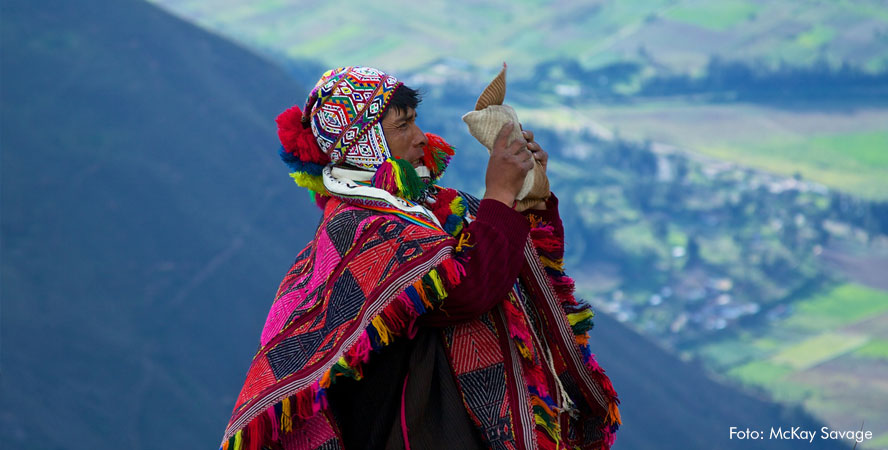
The earth payment transforms into a sensory experience in which every component of the donation highlights the value of maintaining and comprehending the Andean worldview by narrating an ancestor's tale of reciprocity. By receiving the "kintu" of coca leaves and participating in the ritual closing, attendees immerse themselves in a unique experience that transcends time, paying tribute to the earth that, over the centuries, has nourished and protected the Cusco community.
7. Moche Pyramids in the Peruvian Desert
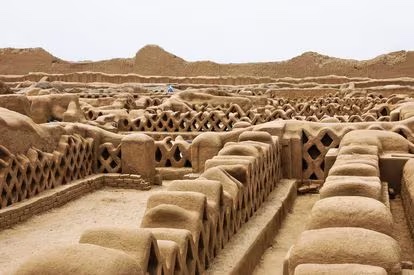
Immerse yourself in the mysterious grandeur of the Moche pyramids, which, although not as magnificent as their Egyptian counterparts, are nevertheless imposing buildings that stand guard over hidden treasures in the wide Peruvian desert. Built by the Moche civilization approximately 100 years ago, these buildings serve as silent reminders of a bygone era rich in archeological treasures and mystery.
The pyramids are particularly notable for their intricacy and cultural value. They are situated in Trujillo, northern Peru. Despite being damaged by El Niño, the Huaca del Sol and the Huaca de la Luna still have amazing murals that show rituals, soldiers, gods, and other subjects. There are numerous pyramids in the desert that have yet to be discovered, adding to the archeological riches that is evident everywhere. Visitors can connect with an ancient society, discover its hidden treasures, and ponder the rich history that lies beneath the Peruvian desert's surface through this intriguing archeological adventure.
Amaru Muru
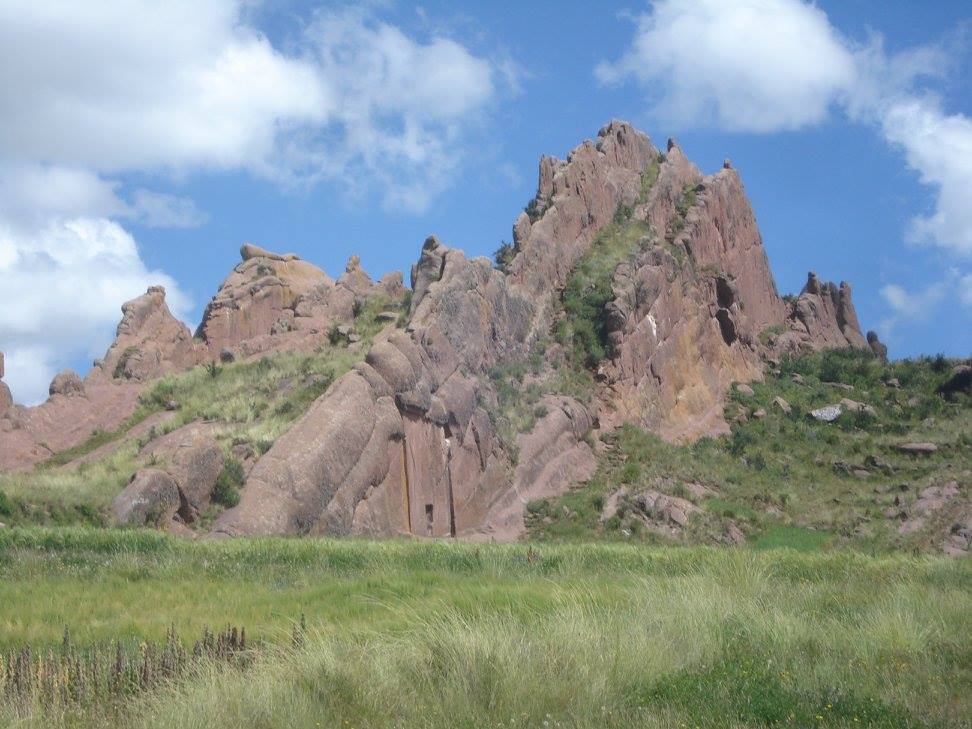
In Peru, Amaru Muru is a mysterious location close to the town of Juli. The stone gate that is the center of attention is commonly called the "Peruvian Portal" or the "Gate of the Gods." This gate is thought to be a passage to the "city of the gods" or another dimension, according to local traditions. According to legend, Amaru Meru, an Incan priest, utilized this portal to flee from Spanish conquistadors while carrying the Solar Disc, a holy relic. The location is mysterious and draws tourists drawn to it by its mysterious past and purportedly paranormal qualities.
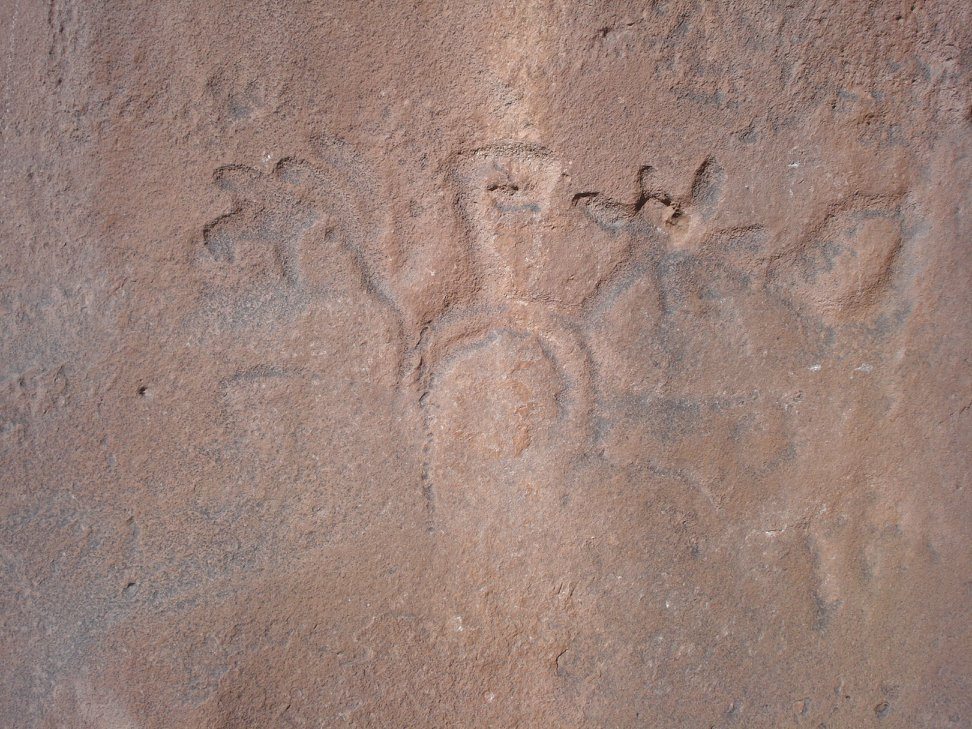
10 amazing Peruvian facts
The world's highest navigable lake: Lake Titicaca.
Lake Titicaca is the highest navigable lake in the world, standing at 3,812 meters above sea level. There are little cities and rudimentary indigenous settlements scattered along the lake's shoreline and islets. Tourists love to see the indigenous people's reed boats and many of their festivities. Because of a mythology that claims the great god Viracocha arrived there and walked over the waters, the Andean people refer to the lake as "The Sacred Lake."
In Peru, people speak 43 native languages.
Although Spanish is the official language of Peru, up to 43 native tongues are also spoken there, including Agurauna, Aymara, Shipibo, Ashaninka, and Quechua.
Pink dolphins in the Amazon
Only the Amazon River basin is home to these extraordinary animals! Dolphins are actually grey at birth, but as they age, they gradually turn pink, creating a rainbow of pink hues. Swimming with these amiable, "magical" creatures up close is an experience that comes only once in a lifetime.
There are "alien skulls" in Peru.
Due to the mass grave's discovery in 1928 by indigenous archaeologist Julio Tello in the Paracas desert peninsula, it was believed that the deceased were extraterrestrials because of their unusually elongated heads in comparison to those of humans. These days, the majority of historians believe that artificial cranial deformation a practice shared by numerous South American tribes caused it. They were said to have pressed newborns' skulls between wooden planks to form this lengthy skull shape for aesthetic purposes and as a noble sign.
Andean Condor the largest flying bird
The Andean condor, with a wingspan of up to 3.2 meters and a height of up to 1.2 meters, is the largest flying bird on Earth! Because of their enormous size, which may weigh up to 15 kg, they are drawn to windy environments like the Colca Canyon in Peru, where they can glide on air currents for hours at a time with little effort.
Arequipa's "White City" is constructed out of volcanic rock.
Arequipa, which is surrounded by four towering volcanoes, is referred to as the "white city" because of its distinctive architecture, which is primarily made of sillar, a white volcanic stone. To preserve its beauty and moniker as the "white city," the city was rebuilt using a lot of the same white stone following a catastrophic earthquake in the 19th century.
A traditional Peruvian poncho can be made in as little as 600 hours.
Since weaving has been practiced for so long, it is among the world's oldest traditions and has played a significant role in Peruvian society. The process of spinning, dying, and weaving a traditional Peruvian poncho, which is typically gifted to a native upon reaching adulthood and is meant to last a lifetime, is thought to take 500–600 hours. At a look, one may tell a person's ethnicity by their style, color, and woven motifs, which vary greatly throughout cultures.
Peru is home to more than 70% of the world's alpaca population.
This member of the camel family is found throughout South America's western coast, in the Peruvian Andes Mountains. For over 150,000 families in Peru, the primary sources of income are the sales of alpaca meat and textile fiber. Alpaca wool is regarded as one of the most opulent textiles in the world and is available in 22 natural colors.
The potato's origins
Around 10,000 years ago, wild potatoes were originally found by the Peruvians at the banks of Lake Titikaka. In the mountains of Peru, there are over 4,000 different kinds of potatoes that thrive. They come in a range of hues and forms, including blue, yellow, pink, and vivid purple. It's National Potato Day on May 30, so if you visit Peru then, get ready to consume a lot of potato dishes!
Salt farming, an age-old practice.
The Maras Salt Mines are located in the Sacred Valley, less than 50 kilometers from Machu Picchu. This complex of more than 3,000 saltwater ponds was constructed more than 500 years before the Inca Empire and is connected by an underground canal system. Members of the 600 local families who own the pools take out the salt that remains after the sun drains the water.
In the heart of Peru, where history and magic converge, unfolds a tapestry of ancient mysteries waiting to be discovered. From the enigmatic Nazca Lines to the hidden pyramids of the Moche, the South American country reveals itself as a treasure trove of ancient secrets and legends that defy imagination.
Are you brave enough to unravel the unknown? Peru invites you to become lost in its enthralling tales and magical scenery. Peruvian Sunrise, your gateway to adventure, will guide you on this fascinating journey.
Discover the wonders that await in every corner, from the valleys of Ica to the majesty of the Andes, and let the mysteries of Peru envelop you in an unforgettable experience.
Prepare yourself for an adventure where you will approach the remarkable with each step. With Peruvian Sunrise, you can turn uncertainty into excitement and make your mysterious vacation a reality! Awaiting you is your adventure: will you go on this trek into the unknown? Explore Peru, a nation whose ancient secrets will astound you!
Discover Peru with us and let the mysteries immerse you in a unique and unforgettable experience!
Peru Travel Blog
Embark on a journey of virtual exploration and catch a glimpse of your future adventures through our latest travel blog articles featuring exciting destinations like Machu Picchu and other must-visit gems in Peru.
Dive into our diverse range of topics: Peruvian Food, Benefits of Coca Leaves, the Best Things to Do in iconic destinations, Sustainable Travel Guides, Ayahuasca and more!
Let our immersive blog posts transport you to beautiful lands, fascinating your senses and igniting your wanderlust with every word. Discover our best articles like Peruvian Festivities and Holidays, Machu Picchu, Peru, and Cusco to inspire your next unforgettable journey.

